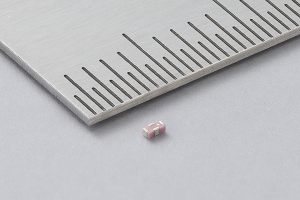Murata enables better Wi-Fi 6E and Wi-Fi 7 antenna design

Murata has announced its new Parasitic Element Coupling Device. This solution improves antenna efficiency by magnetically coupling the parasitic element with the antenna and is the world’s first solution designed for Wi-Fi 6E and Wi-Fi 7 products. For designers of smartphones, tablets, network routers, game consoles, and other compact electronics, it enables them to build more efficient antennas – a key requirement for many modern space-constrained devices.
To develop products conforming to Wi-Fi 6E and Wi-Fi 7 standards, which utilize high-speed wireless communication, multiple high-performance antennas must be installed in electronic devices to improve communication speed and quality.
However, as the dimensions of heatsinks and batteries expand, as processors become more advanced, the available space for mounting antennas tends to decrease.
Consequently, there is a need for smaller antennas. But there is a technical limitation, in that the efficiency of wide-band antennas decreases when they are miniaturized. Therefore, designers need a solution that achieves both miniaturization and high performance.
Murata’s solution is a parasitic element coupling device, made with its multilayer technology as a four-terminal surface-mount component of just 1.0 x 0.5 x 0.35mm.
Murata’s parasitic element coupling device connects the feeding antenna to its parasitic elements more effectively than is possible through free space. It acts as a tiny coupling device whose compact size enables strong coupling performance without the use of magnetic materials, which would be inappropriate at the targeted operating frequencies. One side of the coupling device is connected, at very low insertion loss, between a device’s RF circuitry and its main antenna. The other side is connected between the ground and the parasitic element. The resultant, more direct coupling enables the resonance characteristics of the parasitic element to be added to those of the feeding antenna. As a result, it enables more efficient operation across a broader frequency range or on multiple discrete bands.
The device helps to combat that when an antenna is made smaller, the coupling between it and the parasitic elements is reduced, while the coupling between the parasitic elements and the ground is increased. By sustaining the coupling between the feeding antenna and parasitic element, parasitic element coupling device enables designers to use miniaturized antenna design methods without impacting the communication band of efficiency.
The feeding antenna can cause an impedance mismatch when used over a wide band, leading to a degradation in wireless performance. In addition, when an antenna with a mismatched impedance is connected to a communication circuit using a long cable, the long cable can promote the impedance mismatch, causing larger insertion loss than expected and significantly reducing wireless communication performance. By using the device, you can improve antenna matching and reduce performance degradation in wireless communications even when using long cables.
Contenuti correlati
-
Murata’s latest IR Series encapsulated DC-DC converters available by TTI
Murata’s latest DC-DC converters designed specifically for use in railway applications are now available in Europe through TTI. There are two variants within the IR Series. The IRQ Series is a highly efficient, quarter brick 100W regulated...
-
Murata:new RAIN RFID tag for metal surfaces
Murata has announced LXFLANMXMG-003, a RAIN RFID tag designed for use on metal components and surfaces. Murata has patented various technologies that allow RFID tags to work in conjunction with metal objects. LXFLANMXMG-003 uses the item’s metal...
-
Murata partners with STMicro to add SigFox connectivity to its LoRaWAN module enabling “Best of Both Worlds” capability
Murata today announced the results of its collaboration with both STMicro and SigFox to port the SigFox stack to co-exist alongside the LoRa stack on Murata’s small form factor Type ABZ LoRaWAN™ module. With this feature Murata...
-
Murata: polymer aluminum capacitor in B case size
Murata has developed a polymer aluminum capacitor (PAC) in the B case size (EIA 1411), the world’s first in this size. Identified as part number ECNSB41C336M040L, the smaller PAC is primarily intended for use in mobile devices...
-
Murata: Digital PMBus™ compliant PoL converter with DLC
Murata introduces the OKDL-T/60-W12, a 60 Amp, 95 % efficient addition to the Murata Power Solutions OKD family of digitally controlled point of load (PoL) DC-DC converters. The OKDL-T/60 power module is ideally suited for FPGA and...
-
Murata: miniature 2 Watt DC-DC converters
Murata announced the MTC2 series of 2 Watt single output, regulated and isolated DC/DC converters from Murata Power Solutions. Available with either a 12 or 24 VDC 2:1 input voltage range and output voltages of 3.3, 5,...
-
Murata introduces a digitally controlled PoL converters
Murata Power Solutions has added an expanded range of digitally controlled, PMBus™ compatible OKDL products to its Okami™ series of non-isolated point-of-load (PoL) DC-DC converters. The OKDL-T/6-W12, OKDL-T/12-W12, and OKDL-T/18-W12, delivering 6, 12, and 18A respectively, are...
-
Bourns acquires Murata manufacturing trimming potentiometer business
Bourns announced that it has acquired specified assets of the trimming potentiometer business of Murata Manufacturing. The transfer of the acquired assets will begin in early 2016. Financial terms of the transaction were not disclosed. Bourns invented...















